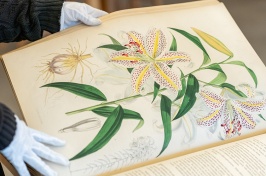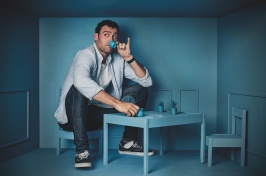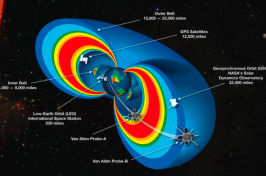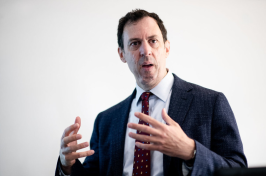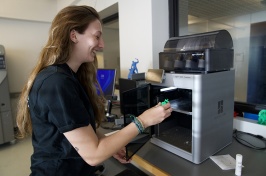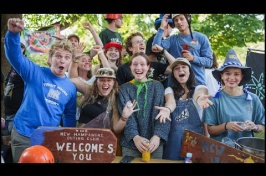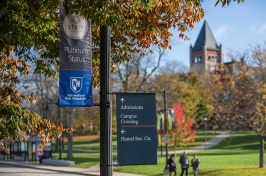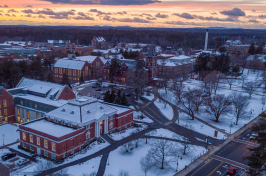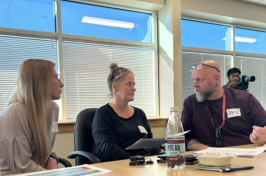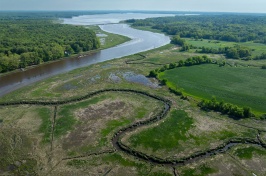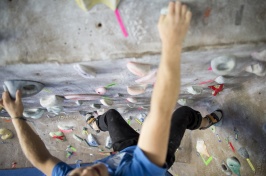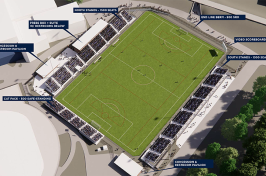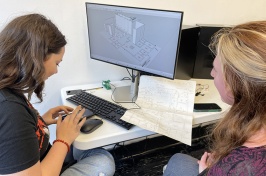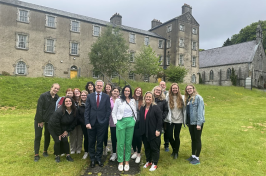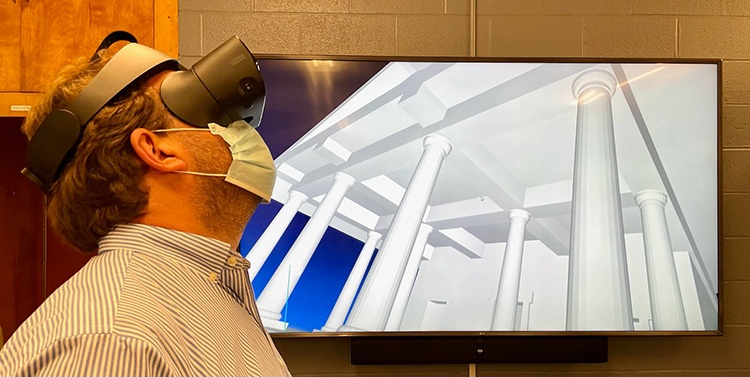Ivo Van der Graaff
“The photo shows me viewing a 3d model, also displayed on a tv screen, of an Etruscan temple in the Roman Architectural Design class that ran in the fall of 2021 (image credit Otto Luna). The model was one of a series of assignments where students learned how to model ancient Roman buildings in software called SketchUp. Their final project consisted in recreating an ancient Roman building which they could then examine in person through virtual reality and 3d print in miniature replicas. This approach repackages the kind of traditional training architects once had in the 19th and 20th centuries where they often travelled to Rome to sketch and recreate the buildings of ancient Rome in elaborate drawings.
“This kind of technology allows for unprecedented access to the buildings of antiquity allowing users and researchers like me to experience the ruined buildings on their original one-to-one scale. It also allows us to consider how factors such as restorations, topography, pathways, light, air circulation and orientation were incorporated in the design of structures that are now in ruins. The process of creating such models lays bare the structural and technological issues that architects in antiquity had to grapple with to build their buildings.
“The relevance of such work is understanding the process of design and the ingenuity of architects and engineers in antiquity. It allows us to understand how builders envisioned their environment and how they used it to enhance their buildings and make them more efficient. The finished models allow those outside of academia to understand the factors inherent in architectural design, how buildings changed over time, and how they were and still can be employed for dramatic effect. It also provides an ideal pedagogical tool for those who cannot travel to the ancient sites.”
—Ivo Van der Graaff, Associate Professor of Art History



